Our impression electric vs petrol
After about 20 trips to the UK with an internal combustion engine car – first with the VW New Beetle and then with the Range Rover Evoque – we were very curious about the differences with the electric car. And we are thrilled!
Charging and range anxiety
Many people are firmly range-phobic and therefore never want to buy an electric car. “I can drive 1,200 kilometres with my economical diesel,” someone once wrote to me on Twitter. When I asked him how often he drove that in one go, he didn’t answer. So most probably never. And that’s exactly why the argument is not an argument. A range of 430 kilometres, or 477 kilometres if we charge at 100%, is actually always enough for journeys within Switzerland. Plugged in at home, the car is fully charged again the next morning and ready for the next journey. We have never had any range anxiety because of this.
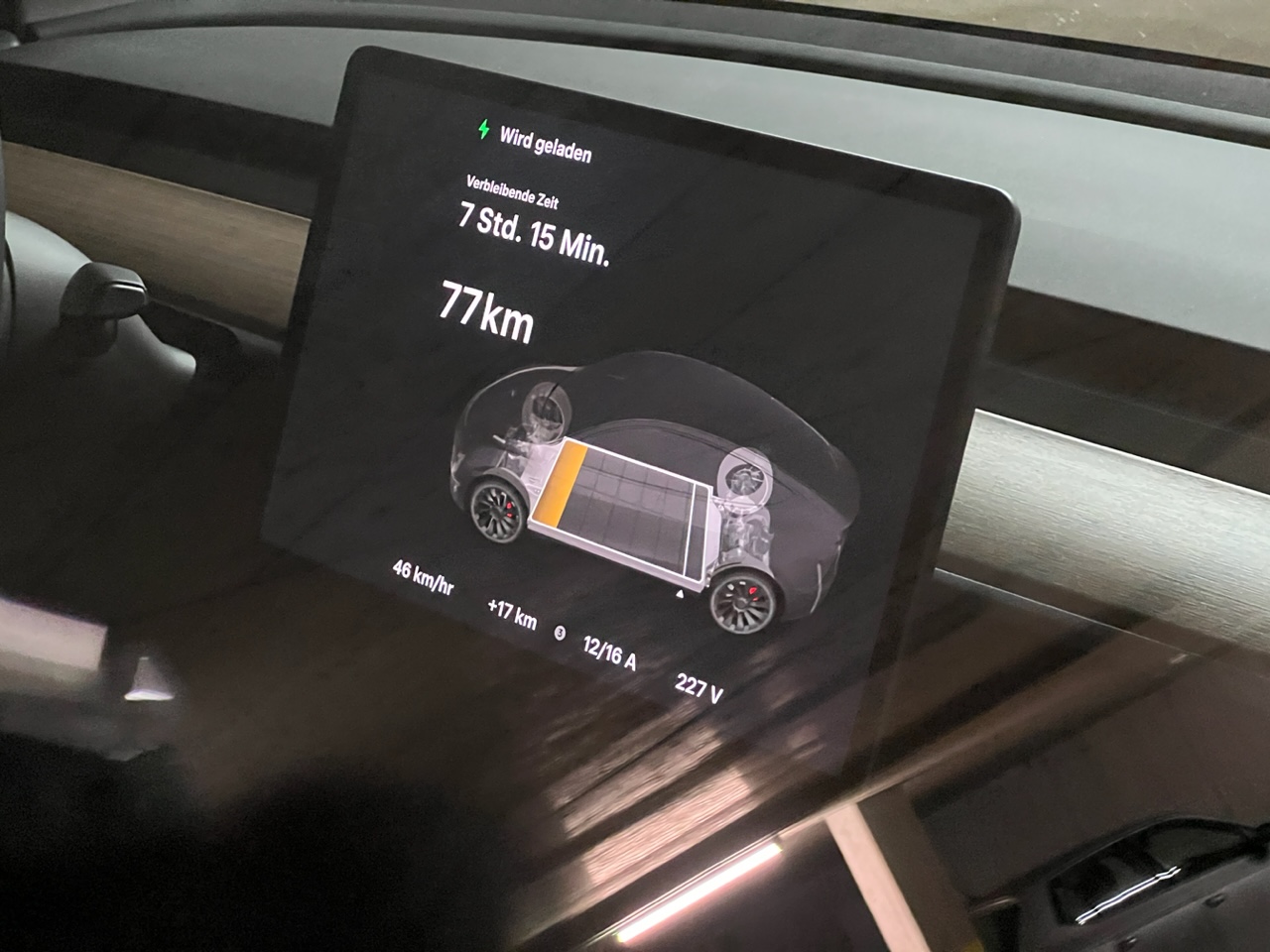
For travelling, the Tesla Supercharger network in Western Europe is very well developed. Every now and then there is a Supercharger. The best thing is that the car knows all the locations and plans the routes accordingly when navigating. So you never have to worry about being stuck with an empty battery. But we wouldn’t have wanted to make the trip with any other electric car. Because while Tesla keeps its Superchargers in good shape and almost all of them were ready for use, other public charging stations were often out of order. We observed this at several motorway service stations. They could also only have been used with a smartphone app, which cannot be downloaded from the Swiss app store at all due to geoblocking, but only by people living in the UK. The same stupid thing goes for pay-for-parking apps BTW. With Tesla, on the other hand, the rule is: plug in, charge, unplug, drive away. The charging station knows by itself that it’s us and automatically charges the amount to my credit card.
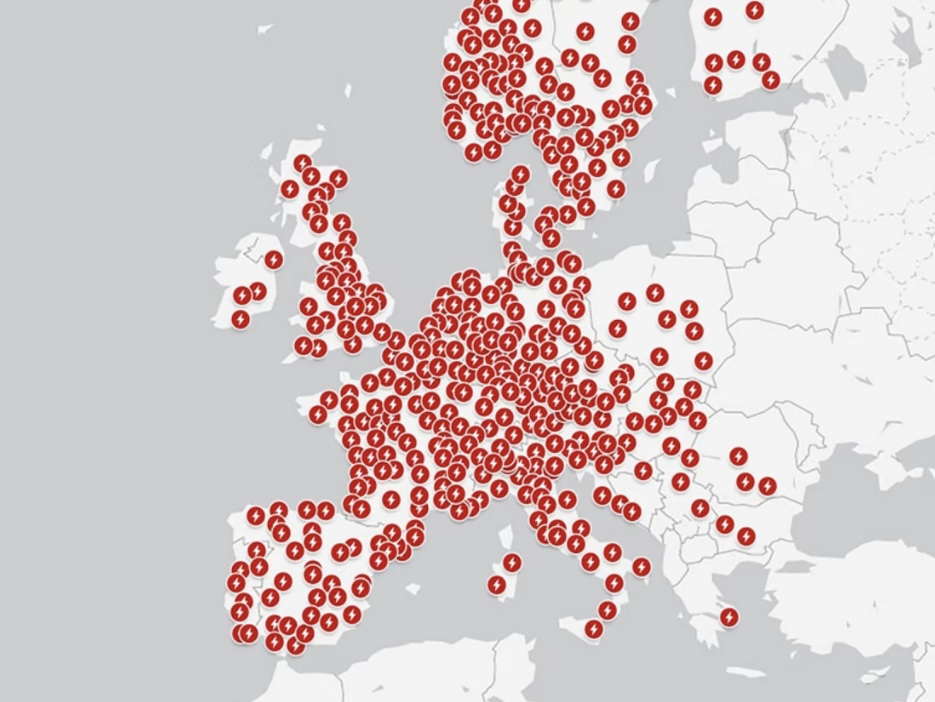 |
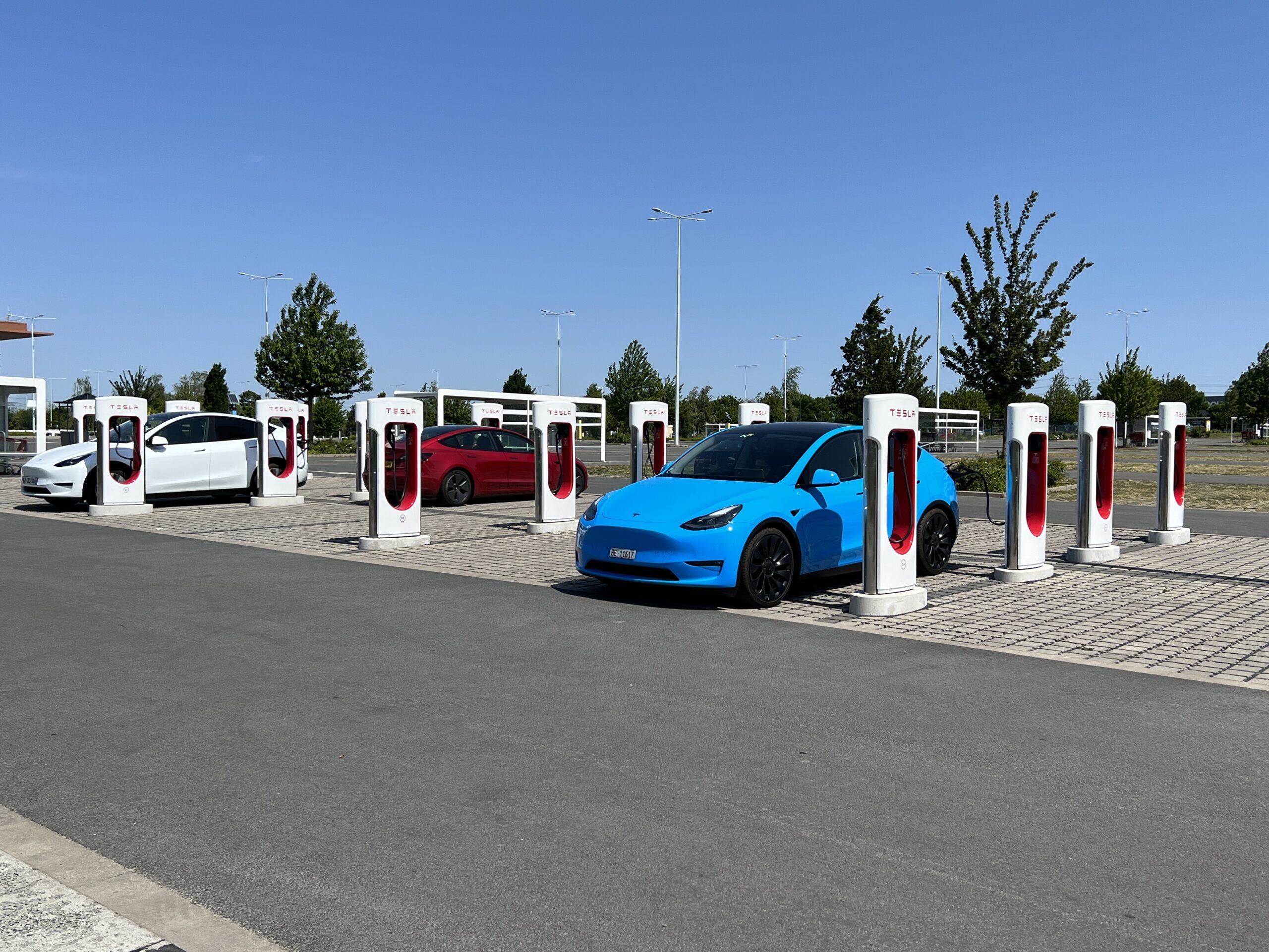 |
Of course: Charging the battery takes longer than refuelling a petrol or diesel car. That is probably the biggest difference between a combustion engine and an electric car. But after the outward and return journeys, we noticed that we were much more relaxed and rested than after other journeys! Cruise control at 160 km/h and a single fuel and toilet stop save travel time, but the constant concentration and the long sitting in the car are very stressful. With the slower but more direct route and the three refuelling stops, we were on the road for about 1 to 1.5 hours longer. On the way there, we had taken this into account and left earlier. On the way back, we were home much later than usual, partly because of the traffic jam in front of the Eurotunnel. However, the Superchargers are often located at a rest stop, a hotel or a shopping centre. This gave the opportunity to stretch the legs, relax the eyes, drink more because of the additional toilet stop possibilities… a real break from driving.
Cost saving
Our Evoque easily consumed 12 litres of petrol per 100 kilometres. At the current petrol price of 1.70 CHF per litre (similarly high in France and England), that makes 20.40 CHF per 100 kilometres. We drove 3,981 kilometres on our trip and would have used about CHF 812 worth of petrol. We paid a total of CHF 332 for charging at the Superchargers.
But not only that: with the Evoque, we would have emitted over 720 kilograms of CO2 (181 g/km) and other pollutants on our journey. The Tesla emits no CO2 at all when driving. We hope that the electricity in the Superchargers will come more and more from environmentally friendly sources in the future.
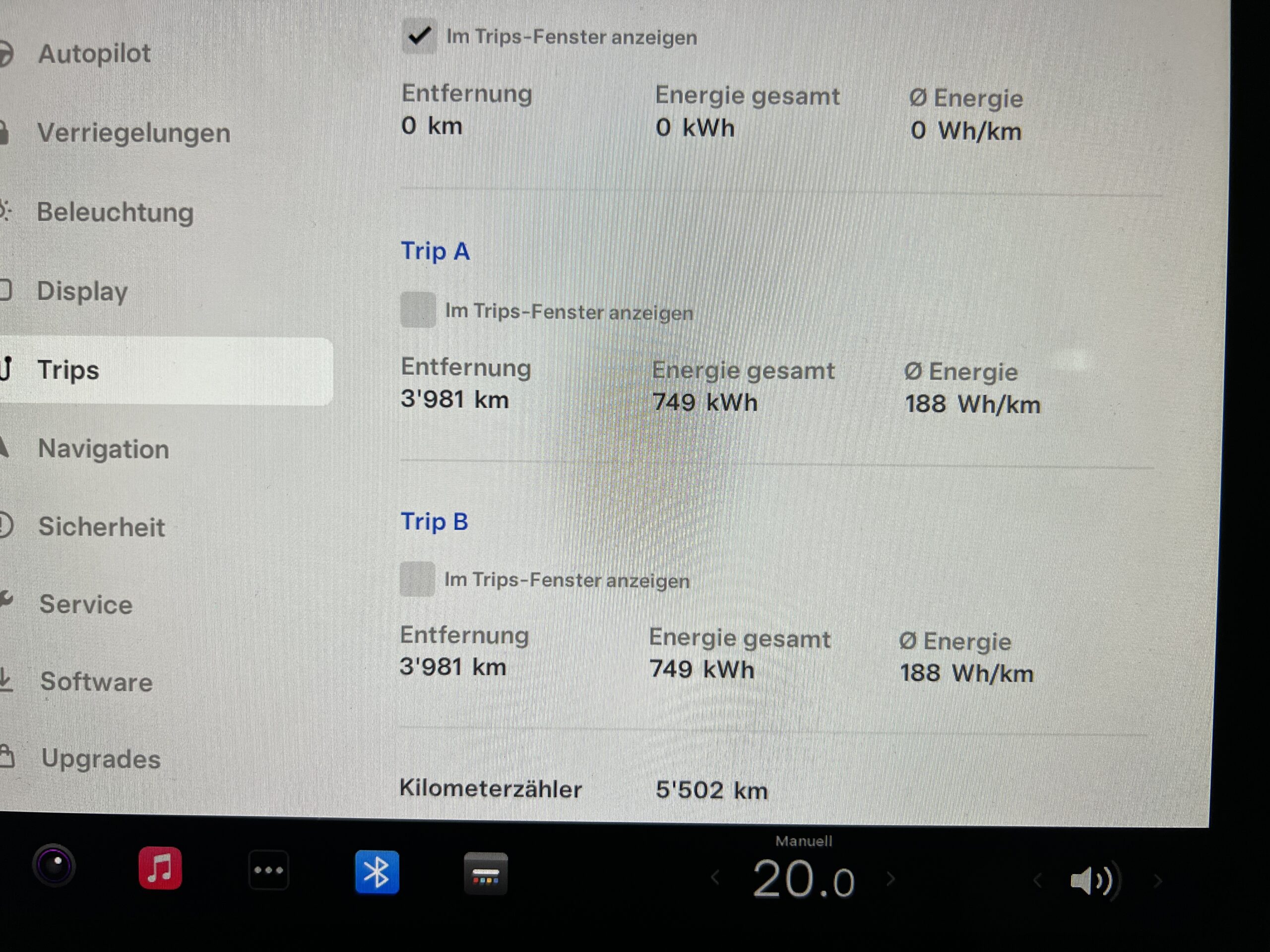 |
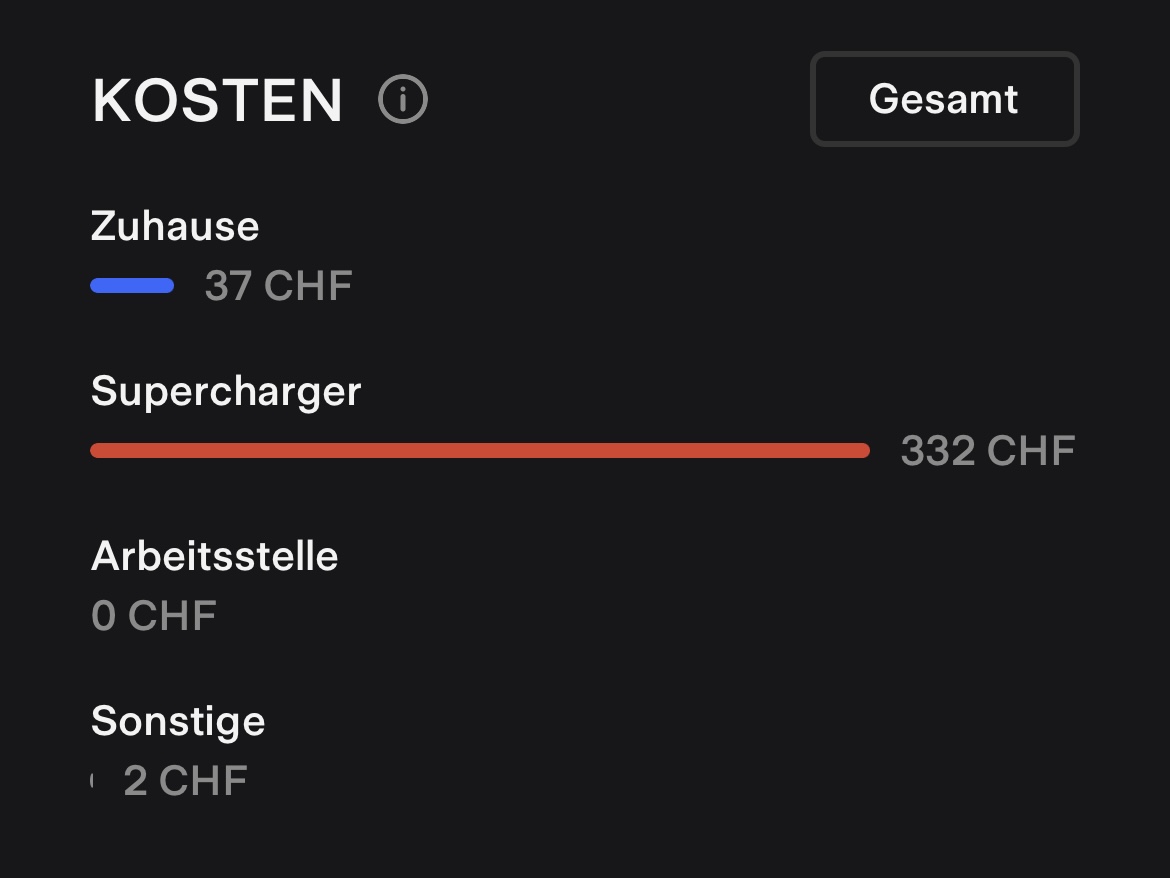 |
Pleasant driving
On the motorway, I often let LucY drive by itself. With the extended autopilot, the car keeps the lane, and brakes and accelerates up to the maximum speed (speed limit plus percentage you want). This works very well so far and the car also learns. The only problem is other drivers: If someone pulls into our safe distance very close in front of us, LucY sometimes brakes hard. Even without Autopilot switched on, LucY helps with braking, for example if the traffic in front of us suddenly jams. It also warns us when a collision is imminent, for example when an oncoming car turned all too close in front of us and was suddenly in front of us and would have been t-boned.
When driving, we have different preferences. While I prefer to drive more to the left of centre in the overtaking lane to keep more distance from the cars in the normal lane (this goes for Switzerland where cars overtake on the left), LucY prefers to drive more to the right of centre. While I tend to drive along the inside of bends on the motorway, LucY prefers to drive along the outside. But because I keep my hands on the steering wheel anyway, I can intervene and take control again myself whenever I want or need, which I also do in construction zones with different coloured markings on the road.
In no time, we learned to love the large screen. I quickly got used to the fact that the speed is displayed in the top left corner (other side in the UK) and not directly in front of me. Contrary to common assumptions, you don’t have to constantly press the screen to do things while driving. Why should you? The car does a lot automatically, and there are voice commands for everything. The screen shows a satellite image of your location and the route as you navigate. Thanks to the size, it is much easier to see what is ahead. Accordingly, on multi-lane roads you can get into the left or right lane in order to be in the best lane for turning off further ahead. Speaking of lanes: LucY shows you more reliably than our previous TomTom app which lane you should be in. And it was only thanks to the satellite image on the large screen that we were able to quickly find an alternative route in the traffic jam on the return journey, which later led back to the intended route, and avoid the traffic jam.

Electric driving is much smoother because the brake pedal is hardly needed. When you take your foot off the accelerator, the car slows down and recuperates energy. We have set LucY so that it then comes to a complete stop. Even on inclines, it holds its position by itself afterwards. And when you drive off, the power is there immediately, the full power of 534 bhp if desired. You don’t have to shift gears like in a manual car (there is only one forward and one reverse gear), and you don’t have to wait a second after stepping on the accelerator for something to happen like in a car with an automatic transmission. The car’s reaction is so immediate that you almost forget that you are controlling the speed with your foot. It feels as if it is controlled directly by the brain.
All in
Anyone who argues that a Tesla is expensive is only comparing the “starting” prices of other car brands – whether electric car or not. When checking all the additional features that come as standard in every Tesla, you’re quickly at the same price or higher. Especially if it’s not just the weakest engine.
Tesla also offers regular “over the air” updates, which only require an internet connection. New functions are introduced and existing functions are improved.
Little criticism
On this first road trip with LucY, we got to know the car pretty well. And have very little criticism:
Autopilot and cruise control “see” thanks to the camera by the interior rearview mirror. If the windscreen is dirty and the camera view is no longer perfect, for example after a few hundred kilometres of motorway driving with lots of insects, the windscreen wiper switches on to improve the camera view. And then it doesn’t stop. Because the dry windscreen wiping only makes things much worse. Either you now have to deactivate autopilot and cruise control for the rest of the journey, or stop and clean the windscreen by hand.
And despite the six cameras around the car, Tesla fails to show the front wheels on the screen. That would be helpful to avoid kerb contact with the front wheel when parking. Because the rim sticks out so far that it gets terribly scratched at the slightest touch. Elon, please correct both in the next update!
Speaking of Elon Musk as CEO of Tesla: we are definitely not fans.
Conclusion
For our needs, the Tesla Model Y fits perfectly. We definitely don’t want to go back to the combustion engine.

